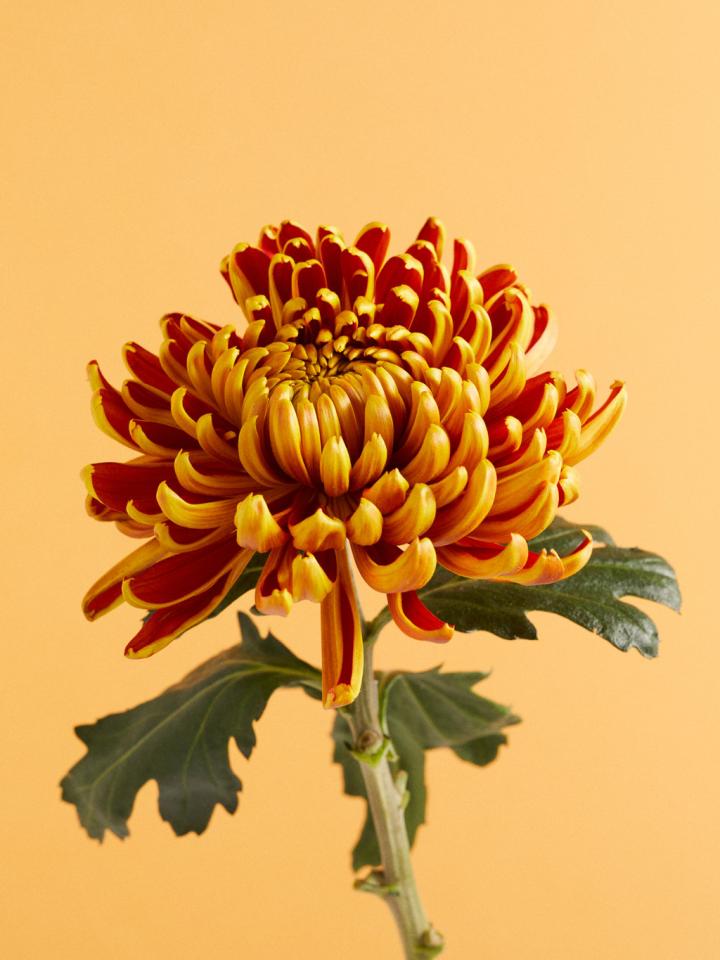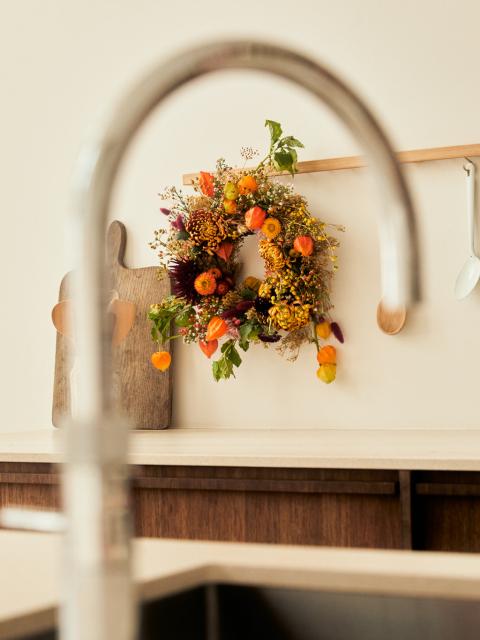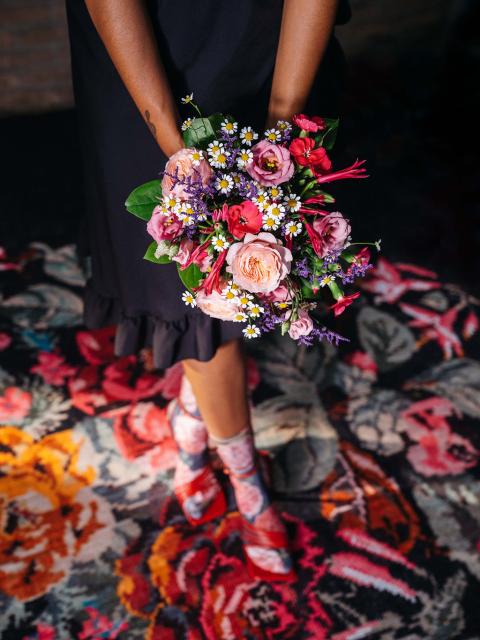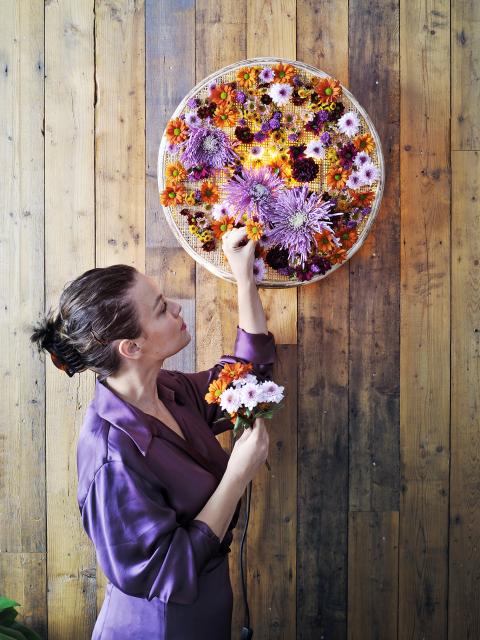Chrysanthemum: characteristics, colours and shapes
The chrysanthemum has a distinctive wreath shape with numerous petals arranged closely together. This flower comes in many colours. There are chrysanthemums in bright colours such as pink, green and yellow (mostly seen in summer), in warm shades of orange and red (mostly seen in autumn) and in deep pink and white (mostly seen in winter). The heart of the chrysanthemum has small, tubular flowers.
Not only is the colour palette of chrysanthemum versatile, the varieties and shapes also vary significantly. There single-flowered and double-flowered chrysanthemums, as well as those with spider and pom pom shapes. The size of the flower also varies, from 1 to as much as 15 centimetres.
Chrysanthemums belong to the aster family (Asteraceae), which also includes flowers such as asters, sunflowers and daisies. Chrysanthemums usually bloom in late summer and autumn (September to November), but there are also varieties that bloom earlier in the year. They are available from florists and garden centres practically all year round.
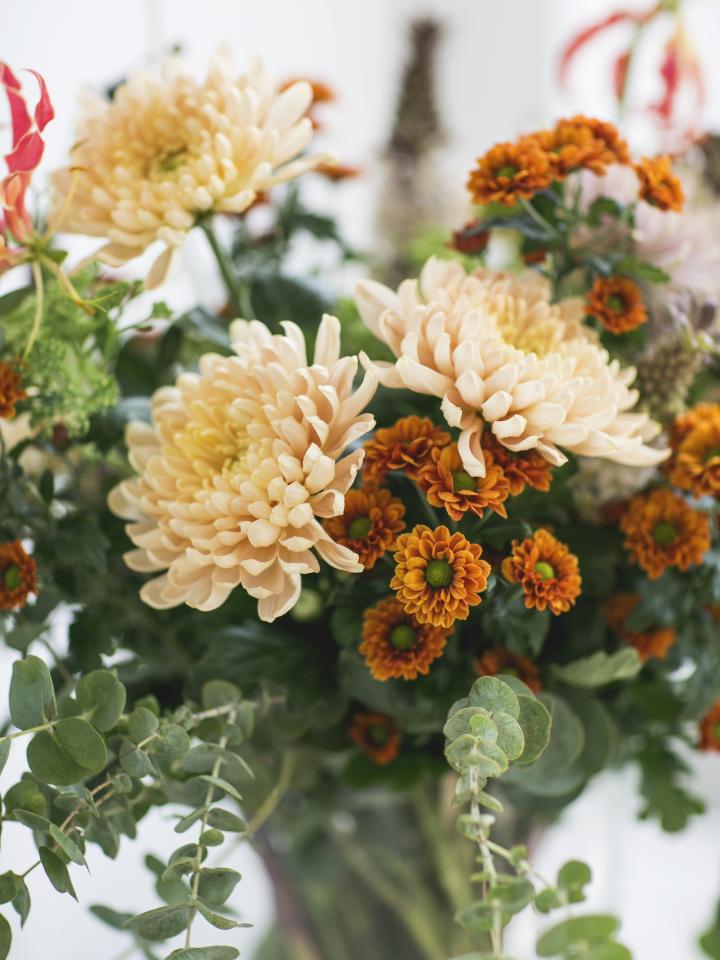
Chrysanthemum species
The chrysanthemum has about 30 different species, which vary mainly in size, shape and style. Chrysanthemums are often classified by shape. For instance, there are fluff chrysanthemums (spherical flower), santinichrysanthemums (small, compact flowers, branched on the stem) and spray chrysanthemums (petals are layered outwards and the flowers are between the fluff chrysanthemum and santinichrysanthemum in terms of size). In addition, chrysanthemums are classified according to application. Hence there is the garden chrysanthemum (as a hardy border plant), potted chrysanthemum (as a pot plant) and cut chrysanthemum (as a cut flower).
Looking at classification based on origin and botanical characteristics, the following main species of chrysanthemums are:
- Chrysanthemum Indicum: this hardy species comprises the original chrysanthemums from China. These flowers are often single-flowered with a classic, round shape.
- Chrysanthemum Koreanum: this hardy species, also known as Korean Chrysanthemum and Chrysantemum Zawadskii, originates from Korea and northern China. This chrysanthemum is robust, hardy and usually flowers in October and November. The petals have a slightly looser structure than those of the Indicum chrysanthemum.
- Chrysanthemum Rubellum: The flowers of this hardy species are similar to those of the Indicum chrysanthemum. Colours of this species range from pink to purple, red and white.
- Chrysanthemum x Morifolium: these are hybrid chrysanthemums derived from crosses between different species. Many of the cultivars grown today fall under this species. Chrysantemum Morifolium is a very popular cut flower and usually has large flower heads. These chrysanthemums are available in almost all colours, from yellow to orange, red, purple and white.
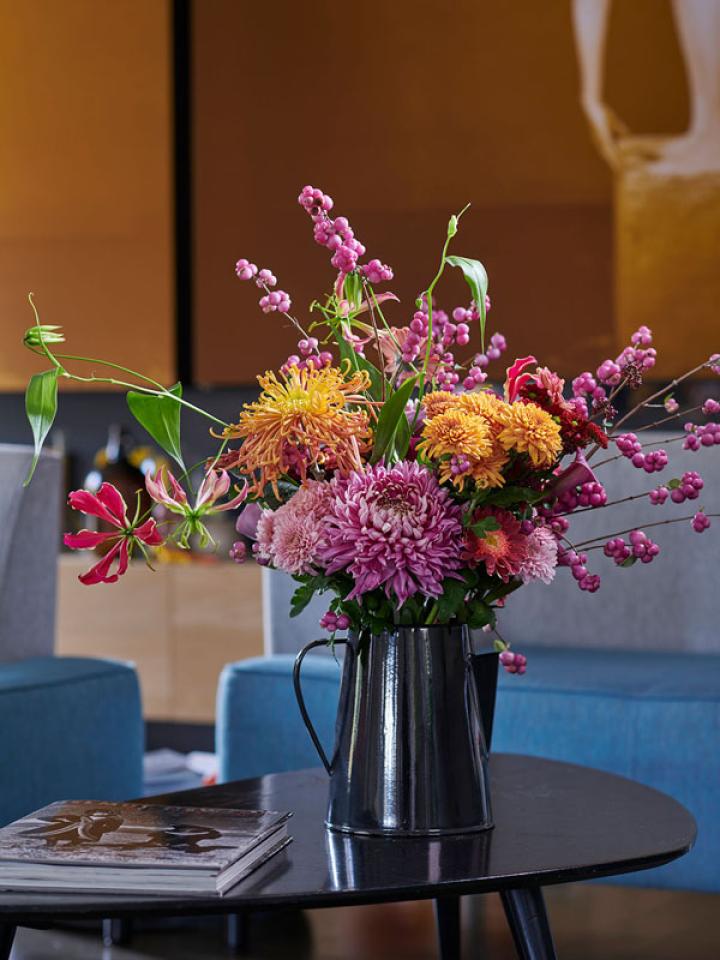
How to care for chrysanthemum as a cut flower in your vase
If you've brought a beautiful bunch of chrysanthemums, you'll want to enjoy them for as long as possible. With the tips and tricks below, you can make sure your flowers stay perky and fresh:
- Cut the stems diagonally with a sharp, clean knife.
- Remove any lower leaves so that no leaves hang into the vase water.
- Place chrysanthemums in a clean vase with water at room temperature.
- Add cut flower food for longer flower life.
- Change the vase water regularly.
- Do not place chrysanthemums in a draught, in full sun, next to a heater or near fruit.
If you're looking for chrysanthemum bouquet inspiration, check out this summer bouquet starring the flower, or this warm autumn bouquet.
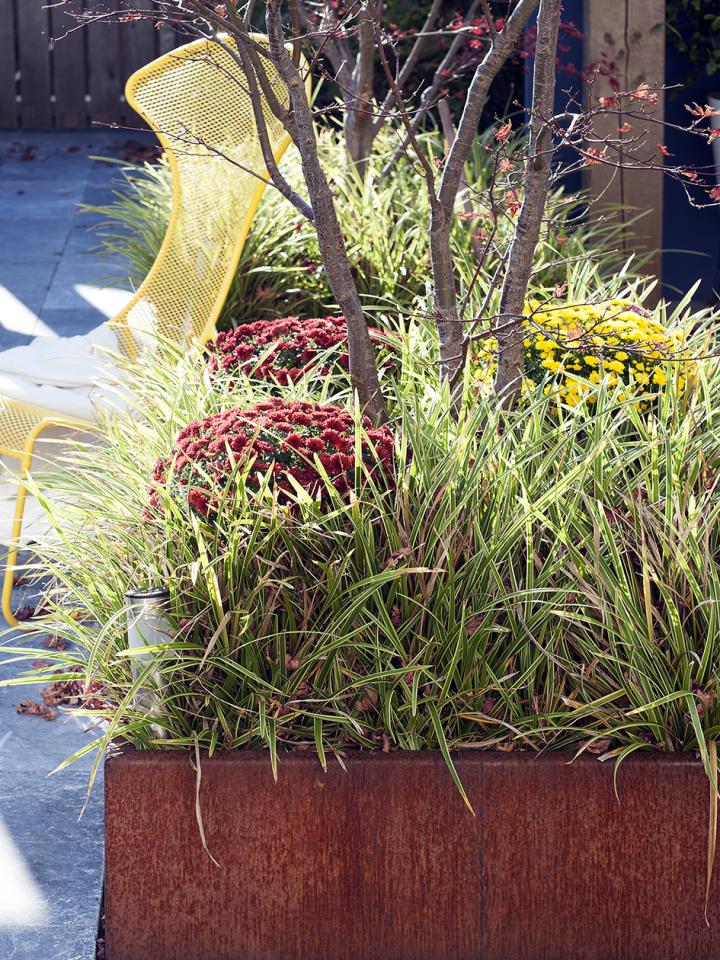
How to plant Chrysanthemum outside
Chrysanthemum is a popular choice in the garden or in planters or pots on the balcony as well as a cut flower. Planning to plant chrysanthemums? Check out this step-by-step plan for planting garden plants and read our tips below:
- Chrysanthemum thrives best in a sunny place or a spot in semi-shade. Chrysanthemums like lots of light, but if they are too sunny and warm, the flowers will not bloom for long.
- Chrysanthemums like well-drained soil, as they are very susceptible to excess water and root rot.
- For chrysanthemums in pots, a spot under a canopy or against a house is ideal so they don't get too much rainwater.
- The ideal time to plant chrysanthemums in the open ground is in spring, during a frost-free period. Planting in spring gives the plant enough time to take root before flowering in autumn.
- For planting in the open ground, it's important that the soil isn't too heavy. Loosen a heavy clay or loam soil and possibly mix it with sand or fine gravel before plant. This will prevent too-wet soil (and root rot) in the damp winter months.
- Plant your chrysanthemum in a pot preferably in August or September, just before flowering starts. Make sure that any excess water can drain out of the pot - always choose a pot with drainage holes.
How to care for Chrysanthemum as a garden plant
Have you planted chrysanthemums in your border or in pots? Check out the tips below for caring for them:
- Give outdoor chrysanthemums organic fertiliser such as compost in spring to promote healthy growth and beautiful blooms.
- Chrysanthemums in pots can be given liquid fertiliser for flowering plants if necessary. Do this in the summer months until the first flowers appear.
- During hot, dry periods, give chrysanthemums plenty of water, but make sure the soil doesn't get soggy. Water at the base of the plant and not on the leaves or flowers.
- Remove spent flowers regularly to encourage the production of new buds.
- Propagating chrysanthemums by taking cuttings? The best way to do this is to divide the plant. You can read more about this here.
Chrysanthemums in winter
Most species of chrysanthemums for the garden are hardy (such as Chrysantemum Rubellum, Chrysantemum Indicum and Chrysantemum Koreanum), so removing them during the winter isn't necessary.
- Protect outdoor chrysanthemums from severe frost: it's better not to protect your chrysanthemums by covering them with leaves and mulch, as this can cause root rot. Rather, cover the plants with material that doesn't retain moisture, such as pine branches, shards of pots or fleece.
- Protect potted chrysanthemum against severe frost: this is especially smart with young plants in their first winter(s). It's best for potted chrysanthemums to spend winter under a canopy, in a light shed or greenhouse. Avoid places that are too cool and damp places as this can lead to root rot.
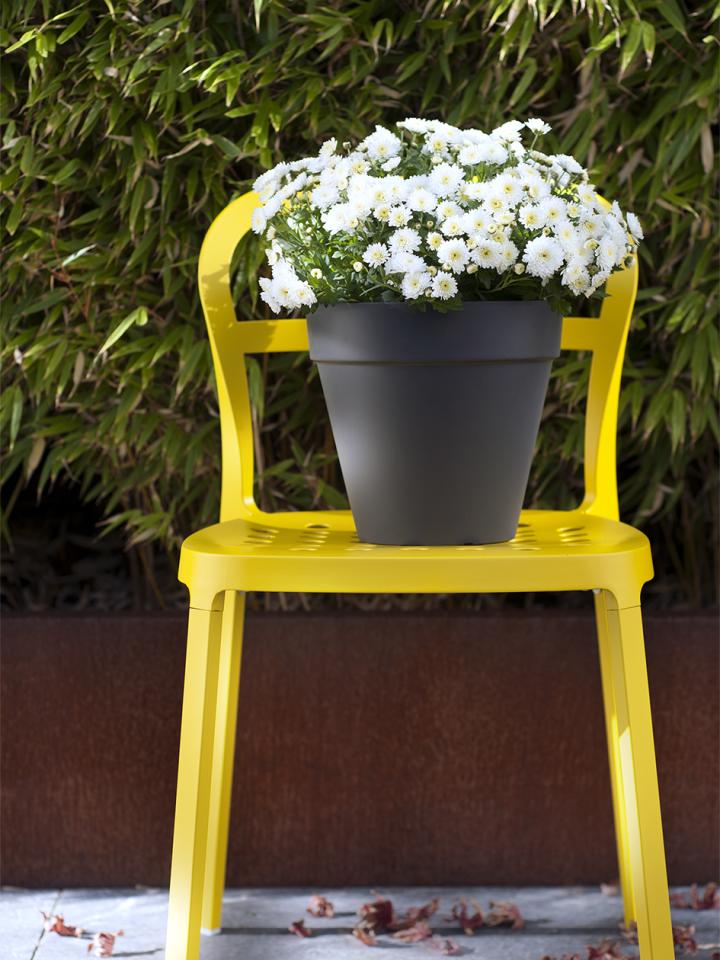
How to prune Chrysanthemum
In spring, when the chance of severe frost has passed (around April), you can prune back the parts of the plant that died off in winter to just above ground level. Don't do this immediately after flowering is finished (around November), as the above-ground parts of the plant offer protection to new shoots during the cold winter. Furthermore, you only need to prune the chrysanthemum's shape slightly, to keep it more compact. To encourage a chrysanthemum to branch more and grow more compactly, you can remove the first buds that appear in summer.
Chrysanthemum origins
The chrysanthemum's name comes from Greek: chrys (gold) and anthemon (flower). This is why the chrysanthemum is known as the ‘golden flower’. Originating in China, the chrysanthemum is over 2,500 years old. In Asia, the chrysanthemum has been wildly popular for centuries. The flower was used for its beautiful blooms and alleged medicinal properties. In China, the flower was often depicted in art, literature and medicine. It became the symbol of happiness, health and immortality.
The flower was introduced to Japan, where it also played an important role, becaming the symbol of the imperial family. The flower also soon gained an important role in Korean culture.
Around 1700, the chrysanthemum fund itself in Europe thanks to trade routes and it became icreasingly popular during the 19th century. European breeders started experimenting with cross-breeding, which led to the development of new cultivars. Today, the chrysanthemum is one of the most widely grown cut flowers in the world. Japan and the Netherlands are among the largest producers of chrysanthemums.
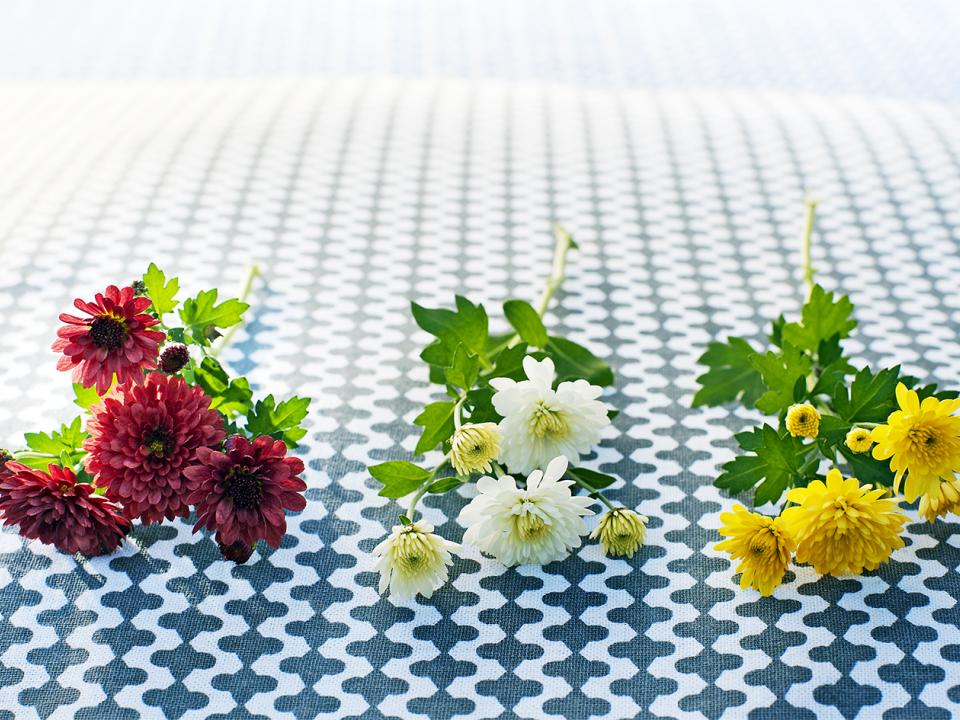
Chrysanthemum symbolism
With the stylish chrysanthemum, you bring both endless colour and a hefty dose of symbolism into your home. Chrysanthemum stands for happiness, health and fidelity. Perfect as a present to a loved one or to yourself.
Is chrysanthemum poisonous?
No, chrysanthemums are not toxic to humans or animals.
Are chrysanthemums edible?
Yes, they are! How about a delicious chrysanthemum cheesecake, warming chrysanthemum broth or sultry chrysanthemum tea? In China, chrysanthemum tea is a real classic. It has a slightly sweet taste and is said to be good for the skin.
Note: never sink your teeth into any random chrysanthemum (or other flower). Only use edible flowers from specialised suppliers that have been grown for consumption.


